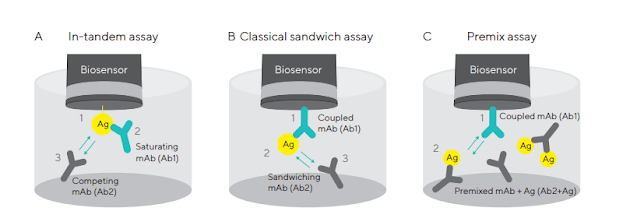Characterizing Irreversible Inhibitors Using Pioneer SPR Assays / Caratterizzazione degli inibitori irreversibili mediante saggi SPR Pioneer

Characterizing Irreversible Inhibitors Using Pioneer SPR Assays / Caratterizzazione degli inibitori irreversibili mediante saggi SPR Pioneer Segnalato dal Dott. Giuseppe Cotellessa / Reported by Dr. Giuseppe Cotellessa Figure : Amine-PEG4-desthiobiotin is coupled to an amine reaction biosensor to create a desthiobiotin sensor surface. The biotin-labeled target is then captured using streptavidin and immobilized onto the desthiobiotin sensor surface for analysis with covalent inhibitors. The target-inhibitor complex is then regenerated using an acetonitrile: NaOH mixture. The surface can then be re-immobilized with fresh target for multiple rounds of covalent inhibitor analysis. / L'ammina-PEG4-destiobiotina è accoppiata ad un biosensore di reazione dell'ammina per creare una superficie del sensore di destiobiotina. Il target marcato con biotina viene quindi catturato utilizzando streptavidina ed immobilizzato sulla superficie del sensore della destiobiotina per l'analis...




